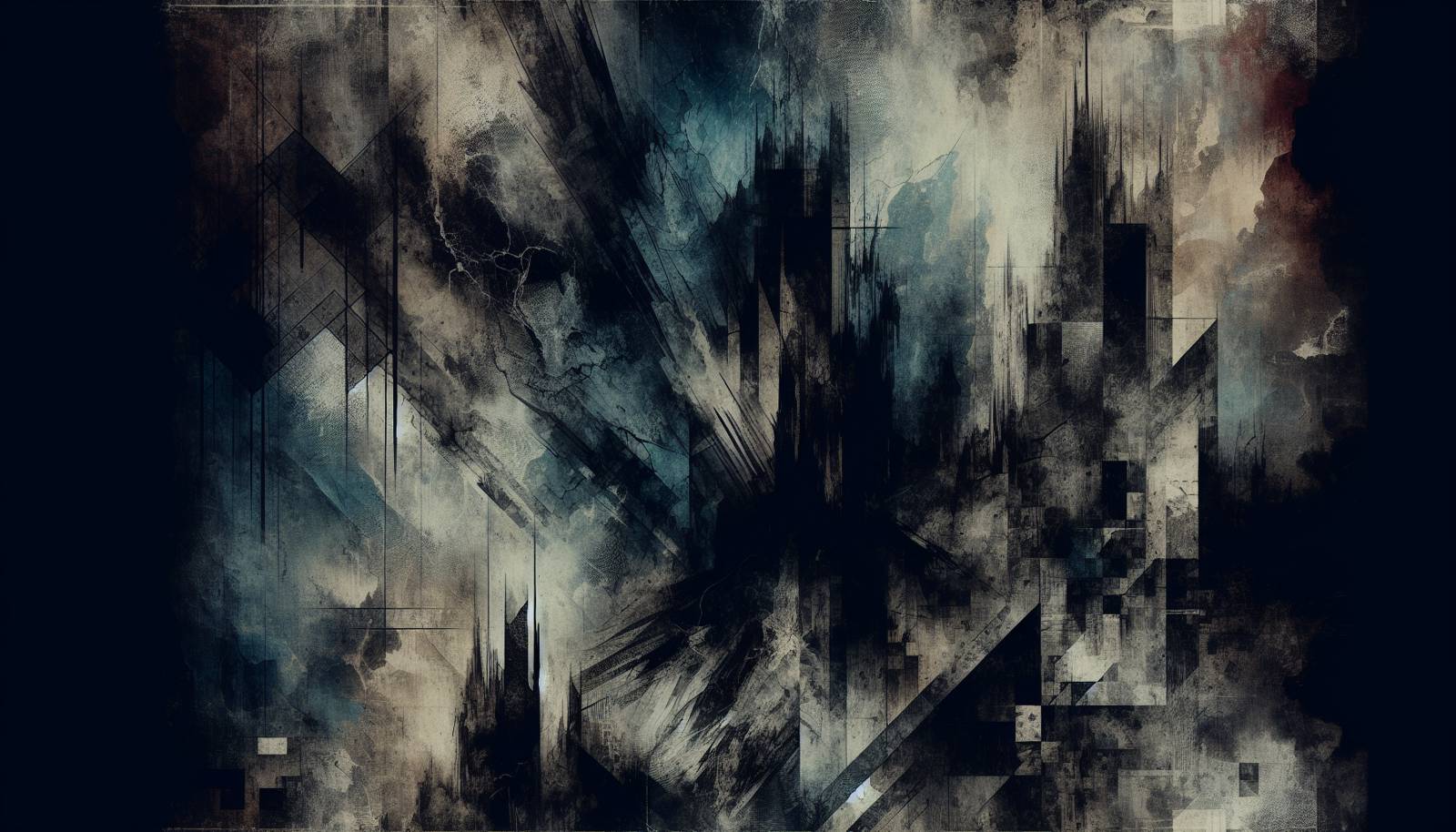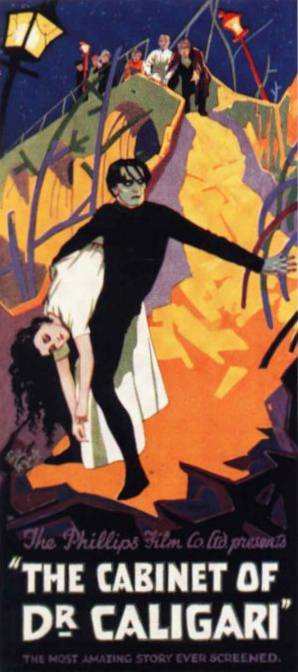
FAQ About The Influence of German Expressionism on Contemporary Horror

What is German Expressionism in film?
German Expressionism is a cinematic style that originated in Germany during the 1910s and 1920s. It is characterized by dramatic, high-contrast lighting, grotesque imagery, and exaggerated sets that create a haunting, distorted reality, often reflecting inner emotional experiences. This style aims to evoke moods and ideas rather than depict realistic settings.

How did German Expressionism influence the horror genre?
German Expressionism had a significant impact on the horror genre by introducing visual elements such as shadow play, angular and disjointed sets, and surreal narratives. These features help to convey a sense of unease and fear, which have become staples in horror films. Filmmakers utilized these techniques to visually explore themes of madness, fear, and the supernatural.

Which key German Expressionist films contributed to horror?
Films such as The Cabinet of Dr. Caligari (1920), Nosferatu (1922), and Metropolis (1927) are key contributions from German Expressionism that influenced the horror genre. These films used innovative set designs, eerie lighting, and unconventional narratives, shaping the visual and atmospheric elements of later horror films.

What are common themes in German Expressionist films that appear in modern horror?
Common themes from German Expressionist films that resonate in modern horror include madness, alienation, and the duality of human nature. These films often delve into the psychological aspects of fear and human psyche, exploring how internal turmoils manifest outwardly, a theme still prevalent in contemporary horror storytelling.

Why is the visual style of German Expressionism suited for horror films?
The visual style of German Expressionism, with its distorted sets, extreme angles, and stark contrasts, is particularly effective for horror films as it visually represents the unsettling and abnormal. This style helps to create an atmosphere of tension and disquiet, crucial for evoking fear and psychological unease in audiences.

Can you name a contemporary horror director influenced by German Expressionism?
Tim Burton is a contemporary director whose films exhibit a strong influence of German Expressionism. His use of gothic aesthetics, stark lighting contrasts, and surreal set designs in movies like Edward Scissorhands and Sleepy Hollow echo the expressionist style, bringing a modern twist to the visual language of horror.

Are there specific visual techniques from German Expressionism used in modern horror films?
Modern horror films often employ visual techniques from German Expressionism, such as chiaroscuro lighting, which uses high contrasts between light and dark to create suspenseful and ominous atmospheres. Distorted and exaggerated set designs, as well as stylized performances, are also techniques derived from expressionism, enhancing the psychological effects in horror storytelling.

How did German Expressionism influence the storytelling in horror films?
German Expressionism influenced storytelling by focusing on the psychological and emotional undercurrents of its characters. This narrative style is seen in horror films that delve into the minds of protagonists, exploring themes of madness and fear. The surreal and often bizarre narratives common in expressionist films are used to create unpredictable and haunting stories in modern horror.

What role does lighting play in German Expressionist films?
In German Expressionist films, lighting plays a critical role in setting the mood and expressing the inner states of characters. Techniques such as dramatic shadow play and exaggerated contrast between light and dark are used to enhance the eerie and unreal atmosphere. This influence is evident in the horror genre, where lighting is key to building suspense and fear.

How is German Expressionism reflected in the themes of modern horror video games?
German Expressionism's themes such as madness and nightmarish realities have permeated into modern horror video games. Games like The Evil Within and Silent Hill series exhibit expressionist influences through surreal environments, psychological horror themes, and visual distortions that evoke a sense of dread and insanity.

What are the differences between German Expressionism and other art movements influencing horror?
German Expressionism is distinct in its focus on visual distortion and emotional expression, whereas other art movements, like Gothic art, prioritize narrative and thematic elements such as the supernatural and melancholy. Expressionism uniquely blends visual art, drama, and psychological depth, making it exceptionally effective for horror aesthetics and storytelling.

How did German Expressionism spread to influence Hollywood horror films?
During the 1920s, many German filmmakers and artists emigrated to Hollywood, bringing their expressionist style with them. This migration allowed the stylistic elements of German Expressionism to blend with American film, leading to the development of the film noir genre and influencing classic horror films such as Dracula and Frankenstein with their visual and thematic elements.

What impact did the film 'Nosferatu' have on horror cinema?
Nosferatu (1922), directed by F.W. Murnau, made a significant impact on horror cinema with its haunting atmosphere, shadow play, and depiction of the vampire count. Its unauthorized adaptation of Bram Stoker's Dracula and innovative use of special effects set a precedent for future vampire and horror films, establishing stylistic elements that are still used today.

What iconic horror film elements were first used by German Expressionists?
German Expressionists were among the first to use elements such as chiaroscuro lighting, grotesque and exaggerated set designs, and a focus on psychological horror and the uncanny. These elements developed into staples in horror cinema, providing visual cues and storytelling techniques to evoke fear and suspense.

How does German Expressionism explore the theme of duality?
The theme of duality in German Expressionism manifests through contrasting visual elements and character studies that reflect opposing aspects of the human condition, such as good vs. evil. This exploration of duality provided a foundation for horror films to examine complex characters and moral ambiguities, deepening the narrative tension and psychological intrigue.

Why are the set designs in German Expressionist films significant?
The set designs in German Expressionist films are significant because they often represent the inner turmoil of characters and the distorted reality of the narrative. These sets were intentionally artificial and exaggerated, contributing to the overall mood and symbolism of the film, subsequently influencing the design of horror films to visually enhance storytelling.

How is the use of shadows in German Expressionist films impactful in horror?
The use of shadows in German Expressionist films is impactful because it creates an atmosphere of mystery and tension. By manipulating light and shadow, filmmakers can suggest unseen dangers and psychological depth, techniques that are crucial for building suspense and fear in horror films.

Can German Expressionism be seen in genres other than horror?
Yes, German Expressionism has influenced genres beyond horror, including film noir and psychological thrillers. The visual style, with its focus on emotional and psychological expression, has been employed in various genres to explore themes of alienation, identity, and moral conflict, enriching the storytelling and aesthetic appeal.

Which modern films are considered to be influenced by German Expressionism?
Modern films such as Black Swan by Darren Aronofsky and Guillermo del Toro's Cronos display influences of German Expressionism through their use of surreal imagery and psychological depth. These films incorporate expressionist techniques to enhance the atmosphere and emotional impact, continuing the legacy of this influential style.

How did German Expressionist filmmakers use music to influence the horror genre?
German Expressionist filmmakers used music to heighten the emotional and psychological impact of their films, often employing dissonant and atmospheric scores to complement the haunting visuals. This integration of music to enhance the mood and tension has carried over into the horror genre, where an evocative soundtrack is essential for eliciting fear and suspense.
